The Southeastern Ceremonial Complex, often referred to as the Southern Death Cult or Southern Cult, had a wide-reaching influence across most of the eastern United States. It marked the abandonment of Middle Woodland mound building and embraced Gordon Willey’s Temple Mound II period.
The Southeastern Ceremonial Complex was first defined in 1945 by Antonio Waring and Preston Holder as a series of four lists of traits which they categorized as the Southeastern (centered) Ceremonial Complex. Their concept was of a complex of a specific cult manifestation that originated with Muskogean speaking people in the southeastern United States. Since then, scholars have expanded the original definition while using its trait lists as a foundation for critical analysis of the entire concept. Each succeeding horizon demonstrates a continual progression and final decline in the ceremonial tradition.
This blend of artifacts, icons, ceremonies, mythology and Mississippian culture coincided with the adoption of maize agriculture and chiefdom systems of social organization. The popular belief is that this development grew out of relationships and influences from Mesoamerica. These developments seem to have been fostered first at the Cahokia site and later spread to other major ceremonial centers. There is; however, evidence that, while there are indications of that relationship, these were independent developments that may have grown out of a collection of Hopewellian beliefs. Such is the case with the Fort Ancient culture of southern Ohio.
The Developmental period for this complex dates from 900 to 1150 A.D. and was marked by the appearance of “long-nosed god masks made of shell and copper and the “square cross” symbol. The archaeological record of that period begins to include large ceremonial centers like Etowah and Moundville with their flat-topped temple mounds and large, flat central plazas and surrounding village of square houses.
The ceremonial complex represents a major part of the religion of the Mississippian people, expressed through a system of symbols that take the form of shell carvings, statues, stone etchings, flaked and ground stone ceremonial implements, copper plates, pottery vessels, and paintings. The climax of the Southern Cult period fell between 1250 and 1350 A.D. and was marked by the appearance of the bi-lobed arrow, striped pole, baton or mace, fringed apron, chunkey player and ogee symbols.
The decline of the cult period came between 1350 and 1450 A.D. when trade between the associated groups began to break down. The appearance of many of the motifs of the previous period began to appear as local pottery designs. A new era, referred to as the post SCC period, stretching between 1450 and 1550 A.D., saw the rise of regional artistic traditions with stylistic differences. This trend of decline and new thought continued after 1550 as the old ways were terminated and tribal society emerged with European contact.
The social organization of the Mississippian culture was based on warfare, which may be identified by exotic motifs and symbols and by costly raw materials such as conchs from Florida, copper from the southeast, lead from northern Illinois and Iowa, pottery from Tennessee, stone tool sources from Kansas, Texas, and southern Illinois. Such objects occur in elite burials, together with war axes, maces, and other weapons. These warrior symbols occur alongside other artifacts which bear exotic cosmic imagery, depicting animals, humans, and mythic beasts. This symbolic imagery bound together warfare, cosmology, and nobility into a coherent whole. Some of these categories of artifacts were used as markers of chiefly office, which varied from one location to another. The term reflects a complex, highly variable set of religious mechanisms that supported the authority of local chiefs.
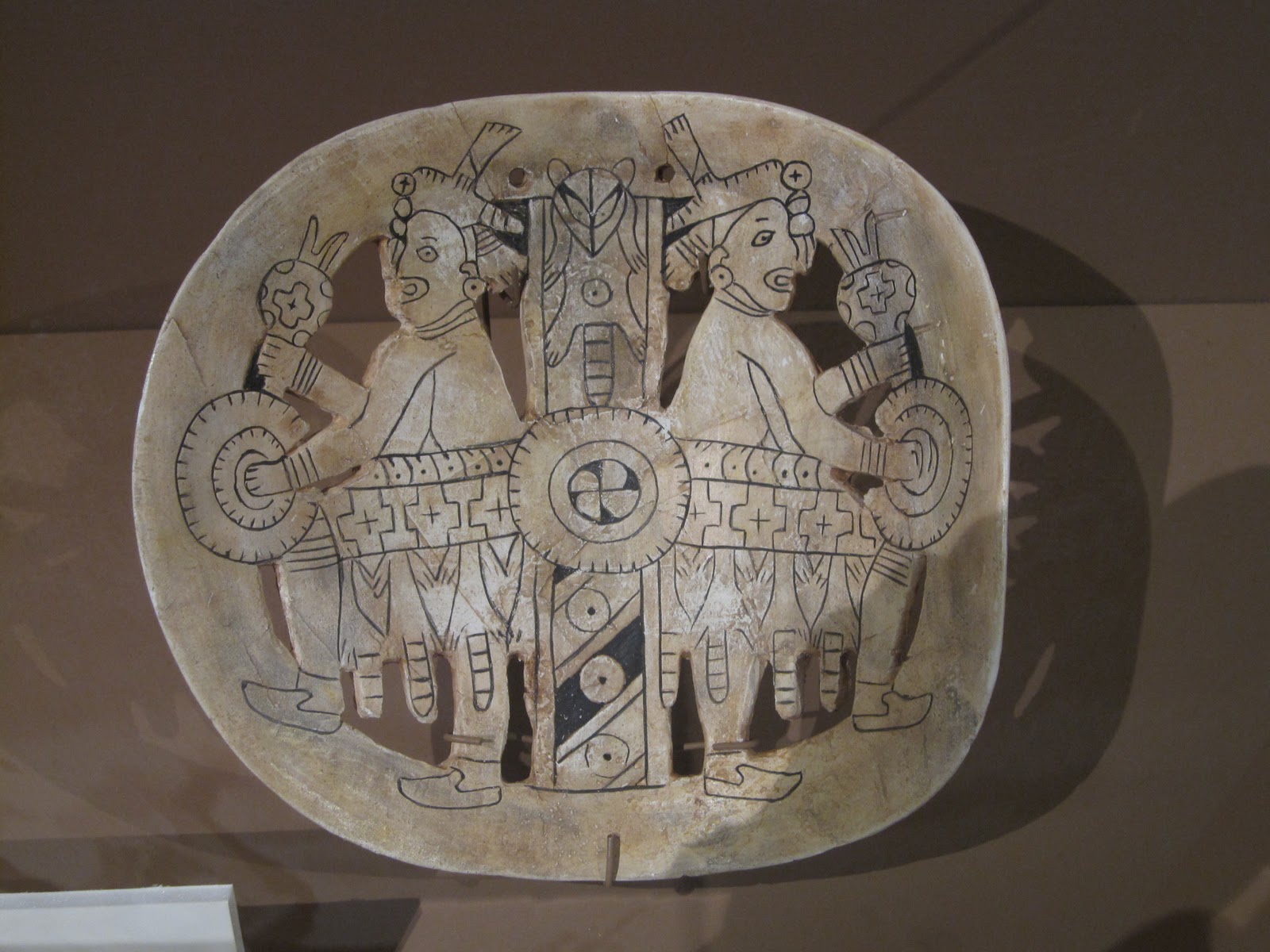
Most S.E.C.C. imagery focuses on cosmology and the supernatural beings who inhabit the cosmos. The cosmological map encompassed real, knowable locations, whether in this world or the supernatural reality of the Otherworld. S.E.C.C. iconography portrayed the cosmos in three levels. The Above World or Overworld, was the home of the Thunderers, the Sun, Moon, and Morning Star or Red Horn / “He Who Wears Human Heads For Earrings” and represented Order and Stability. The Middle World was the Earth that humans live in. The Beneath World or Under World was a cold, dark place of chaos that was home to the underwater panther and Corn Mother or “Old Woman Who Never Dies”. These three worlds were connected by an axis mundi, usually portrayed as a cedar tree or a striped pole reaching from the Under World to the Over World. Each of the three levels also was believed to have its own sub-levels. Deeply ingrained in the world view was the concept of duality and opposition. The beings of the Upper and Under realms were in constant opposition to each other. Ritual and ceremony were the means by which these powerful forces could be accessed and harnessed. Many common motifs in S.E.C.C. artwork are locative symbols that help determine where the action takes place and where the beings portrayed originated.
This motif derives its name from its resemblance to flower petals, but it most likely represents feathers. A Petaloid placed around individuals, objects, or supernatural beings denotes its location as “celestial”.

The Cross in Circle Motif is prevalent in most Native American religions. It has solar connotations and usually symbolizes the sacred fire that exists in the Middle World. A Cross in Circle Motif combined with a Petaloid Motif symbolized the Above World.
Pictured here are some of the ways the Cross in Circle motif is displayed on objects.

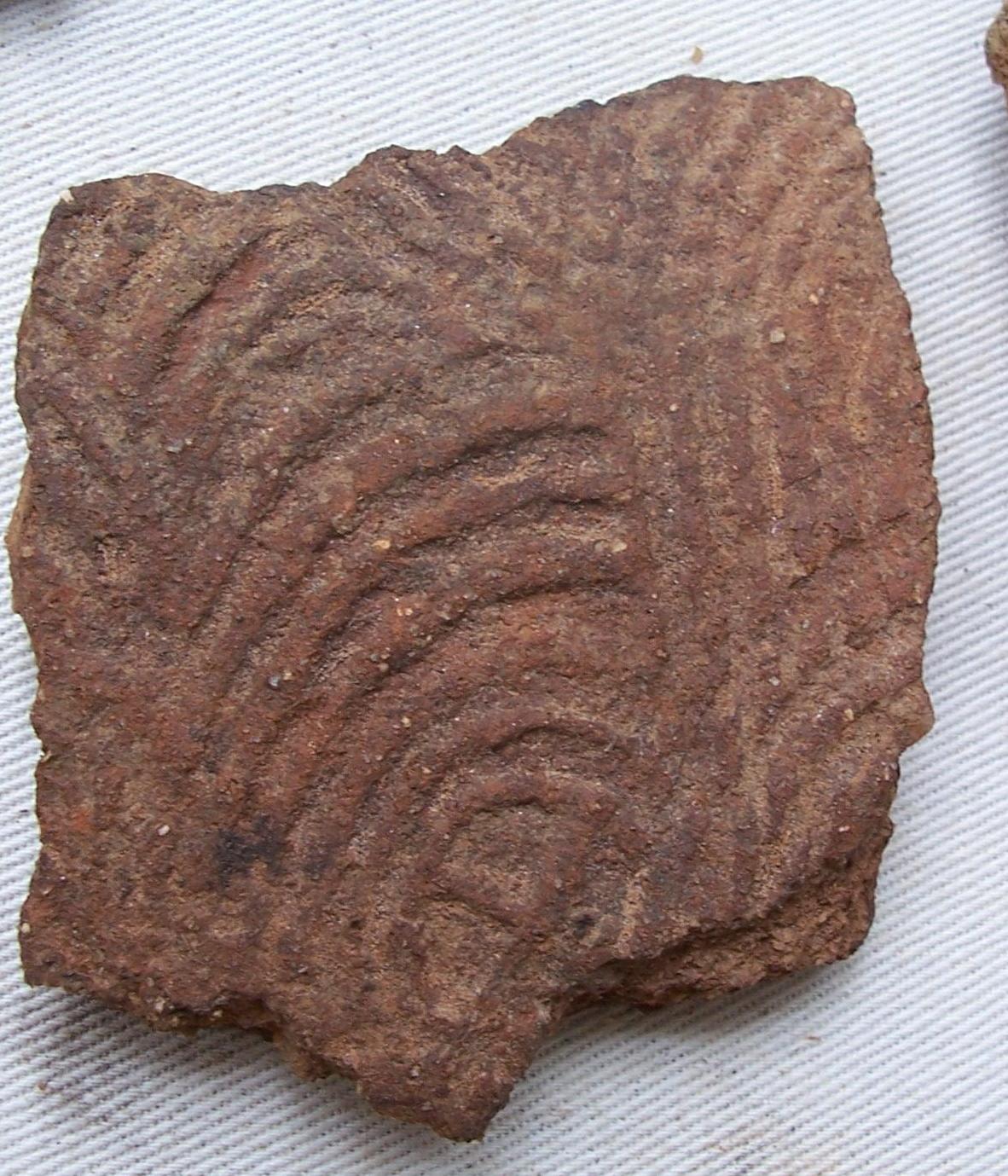
Quincunx or Cross in Circle Motif appears on Savannah Complicated Stamped pottery in Georgia. Savannah Complicated Stamped pottery belongs to the Middle Mississippian period and dates between 1200 and 1350 A.D. during the climax of the cult period.
A swastika is a variation of the Cross in Circle Motif, symbolizing the creative, generative power of the Underworld. This motif appears in a variety of ways and as illustrated here.
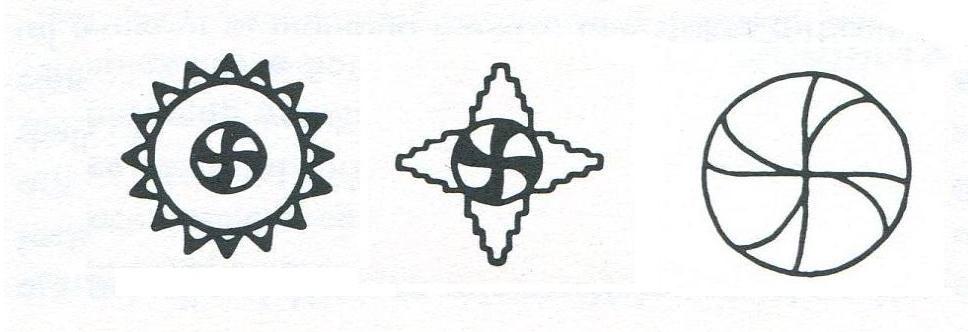
Quincunx or Cross in Circle Motif appears on Savannah Complicated Stamped pottery in Georgia. Savannah Complicated Stamped pottery belongs to the Middle Mississippian period and dates between 1200 and 1350 A.D. during the climax of the cult period.
Beings wearing the Forked Eye Surround Motif are understood to reside in the Above World. This motif often appears from the eye being the foremost part of the motif. It is derived from the eye markings of the Peregrine Falcon. A line attached to the motif is thought to represent weeping.

The origin of these eye markings is said to be from members of the falconidae family in Central America. In the southeastern United States, the eye markings of the Duck Hawk, Peal’s Falcon, and the Peregrine Falcon all closely resemble the motif.
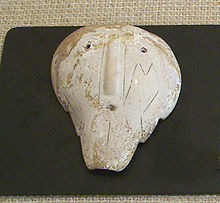
The Ogee Motif symbolized portals into the Underworld. It appears frequently on Under World Deities. It may symbolize caves, or it may be derived from representations of female genitalia, or a human eye motif. The barred oval consists of an oval with a horizontal bar and is seen on animal and serpent representations as well as by itself. The “open eye” motif only occurs at the Moundville site in Alabama.

The origin of these eye markings is said to be from members of the falconidae family in Central America. In the southeastern United States, the eye markings of the Duck Hawk, Peal’s Falcon, and the Peregrine Falcon all closely resemble the motif.
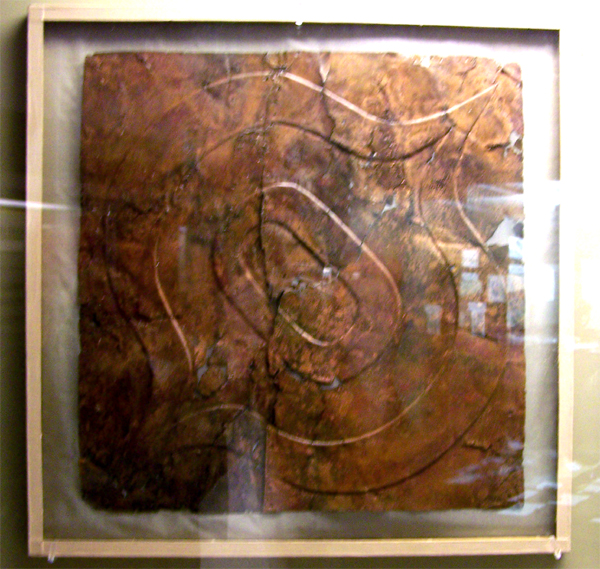
The Bi-Lobed Arrow Motif is often seen in the headdresses of the warriors/birdmen/chunkey players. A complex symbol, it is a graphic representation of a bow and arrow, an atlatl , or possibly a calumet. In the Red Horn Cycle, Red Horn is also called “He who gets hit with deer lungs”, which may be a euphemism or an allusion to the fact that deer lungs with the trachea attached, resemble the graphic depiction of the Bi-Lobed Arrow. It may symbolize kinship and adoption rituals related to social hierarchies. Repouss’e copper examples have been found in Mississippian sites.

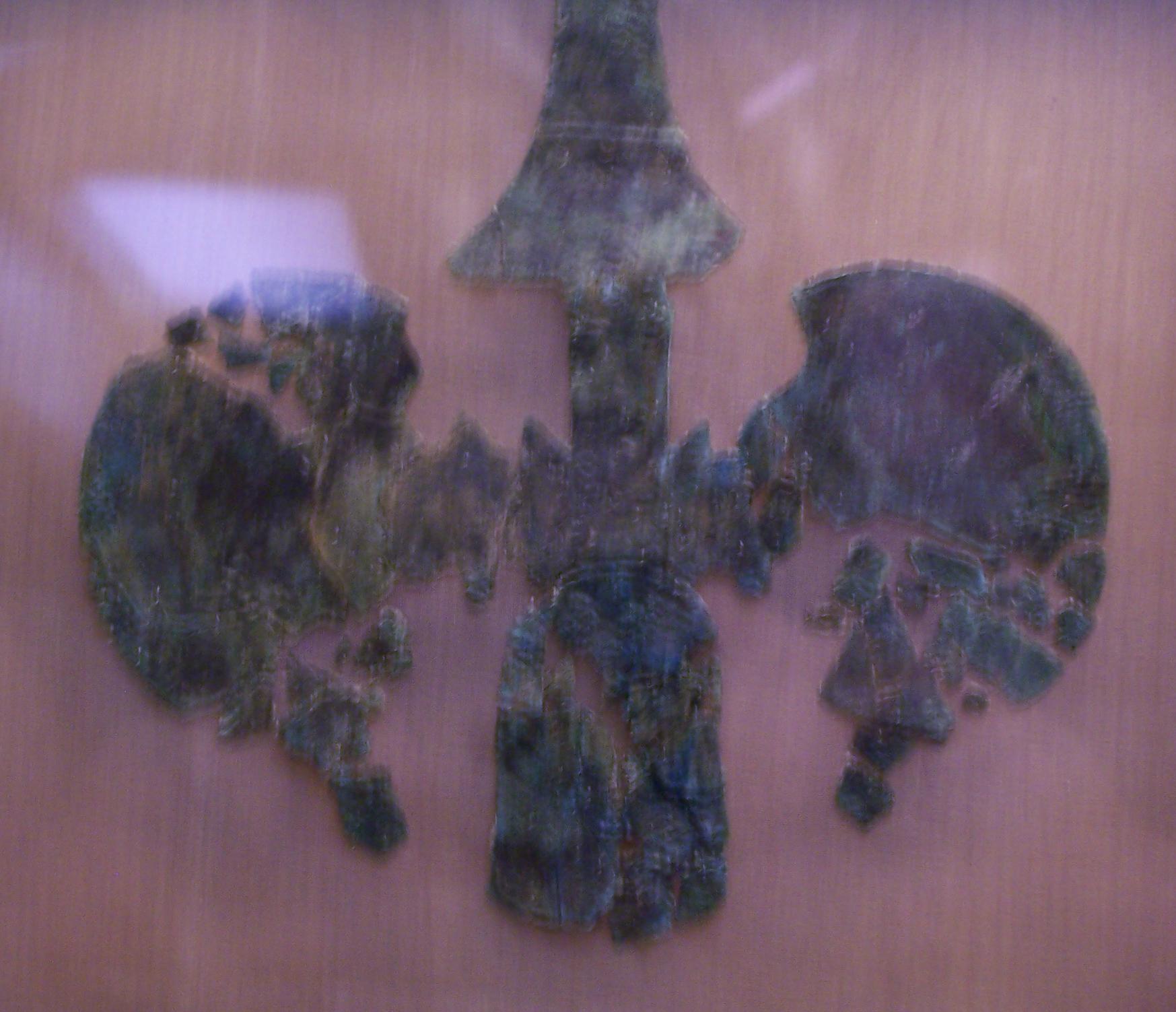
The Hand and Eye Motif is a human hand with an eye gazing out from the palm, yet another symbol of deity. It was one of the most common motifs in Mississippian symbolism and may be related to the Ogee Motif, suggesting it represents a portal to the Otherworld.
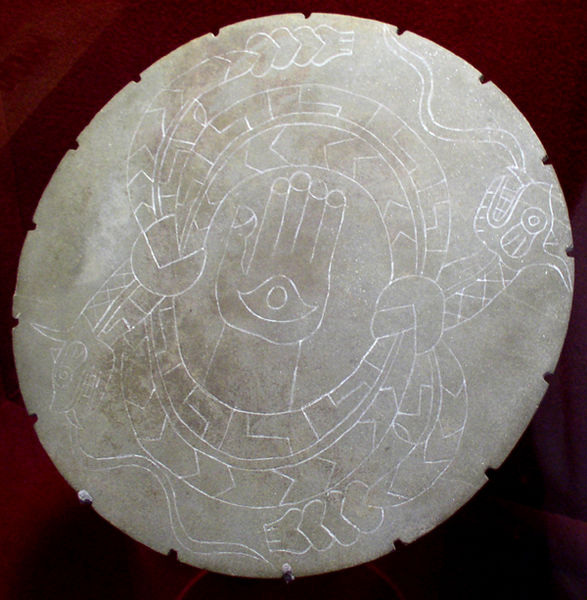
The Mace Motif usually is associated with the warrior image and may be combined with other motifs, especially the Cross in Circle Motif. It is a graphic representation of a war club or ceremonial mace , such as the chipped flint and ground stone versions found throughout the southeast.

The Columnella Pendant is a graphic representation of the longitudinal center columnella of a whelk shell. Because of the association of whelk shells with the black drink ceremony , it is theorized that this symbol is associated with it as well.
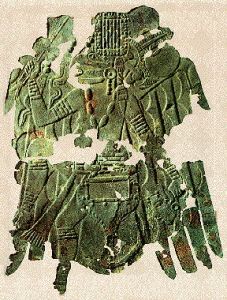
The falcon is one of the most conspicuous symbols of the S.E.C.C. It was simultaneously an avatar of warriors and an object of supplication for a lengthy life, healthy family, and a long line of descendants. Its supernatural origin is placed in the Upperworld with a pantheon including the Sun, Moon, and Four Stars.
In Cahokia the falcon imagery found elaborate figural expression. It is associated with warfare, high stakes gaming, and possibly family dynastic ambitions, symbolized by arrow flights and the rising of the pre-dawn morning star as metaphors for the succession of descendants into the future. Raptor imagery gained prominence during the Hopewell period, but attained its peak in the Braden Style of the early Mississippian period. It survived afterward in the Red Horn mythological cycle and native religion of the Ho-Chunk (Winnebagos), Osage, Ioway, and other plains Siouan peoples. In the Braden Style, the Birdman is divided into four categories, the Falcon dancer with wings (a Spiro shell engraving, a Warrior with wings (a copper plate from multiple locations), and finally a Chunkey player.
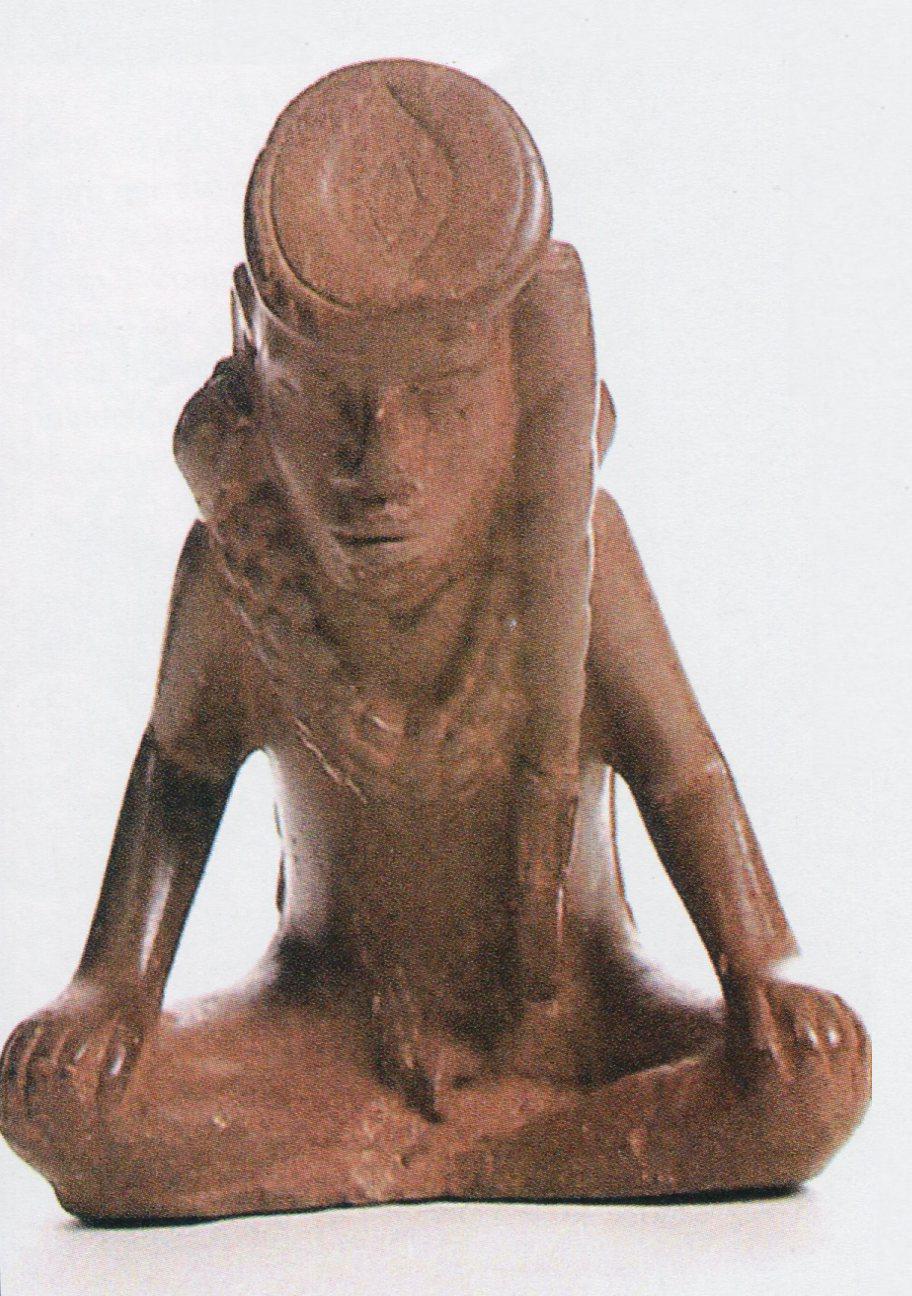
The Mythic Cycle is from the Ho Chunk, or Winnebago people. The mythic cycle of Red Horn and his sons has certain analogies with the Hero Twins mythic cycle of Mesioamerican Red Horn was known by many names, including “Morning Star “, a reference to his celestial origin, and “He who is Struck with Deer Lungs,” a possible reference to the Bi-Lobed Arrow Motif. In the episode associated with this name, Red Horn turns into an arrow to win a race. After winning the race, Red Horn creates heads on his earlobes and makes his hair into a long red braid. Thus he becomes known as “Redhorn” and as “He who has Human Heads as Earlobes”.
In another episode, Redhorn and his friends are challenged by the Giants to play ball (or possibly chunkey) with their lives staked on the outcome. The best Giant player was a woman with long red hair identical to Redhorn’s. The little heads on Redhorn’s ears caused her to laugh so much that it interfered with her game and the Giants lost. The Giants lost all the other contests as well. Then they challenged Redhorn and his friends to a wrestling match in which they threw all but Red Horn’s friend Turtle. Since Redhorn and his fellow spirits lost two out of the three matches, they were all slain. The two wives of Redhorn were pregnant at the time of his death. The sons born to each have red hair, with the older one having heads where his earlobes should be, and the younger one having heads in place of his nipples. The older brother discovers where the Giants keep the heads of Redhorn and his friends. The two boys use their powers to steal the heads from the Giants, whom they wipe out almost completely. The boys bring back to life Redhorn, Storms as He Walks, and Turtle. In honor of this feat, Turtle and “Storms as He Walks” promise the boys special weapons.
In another episode, the sons of Redhorn decide to go on the warpath. The older brother asks “Storms as He Walks” for the Thunderbird War bundle. After some effort, it is produced, but the Thunderbirds demand that it have a case. A friend of the sons of Redhorn offers his own body as its case. The boys take the Thunderbird War bundle and with their followers go on a raid to the other side of the sky.
Many S.E.C.C. images seem to be of Red Horn, his companions, and his sons. The characters in the myth seem to be tied integrally to the calumet (peace pipe) ceremony, and its association with kinship and adoption. In fact, the Bi-Lobed Arrow Motif may be a graphic depiction of the calumet. Other images found in S.E.C.C. art show figures with long-nosed god maskettes on their ears and in place of their nipples.

The Great Serpents, the great denizens of the Underworld, were described as powerful beings who were in constant antagonism with the forces of the Upper World, usually represented by the Thunderers (Birdmen or Falcon beings). Although men were to be careful of these beings, they could also be the source of great power. A Shawnee myth tells of the capture and dismemberment of Msi Kinepikwa. The pieces were distributed to the five septs of the tribe, who kept them in their sacred “medicine bundles”.